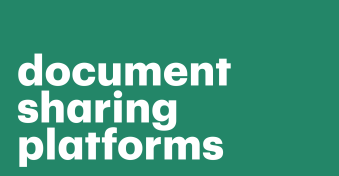There’s no doubt that having a solid sales stack is a must.
In fact, 82% of SDRs agree that sales technologies are critical for closing deals while the companies that don’t use any software for sales enablement are known to be less likely to achieve their goals.
Yet, just like a proper sales stack can boost your productivity and help you close more deals, relying on the wrong tools can significantly harm your business.
In this article, we will talk about the common signs of why you might need to change your sales stack and provide a step-by-step guide on how to do that with minimum risk for your business.
Three signs it’s time to re-evaluate your sales stack
While old friends and old wine might be the best, the same does not apply to your sales stack. The tools that worked just fine a year ago might not be as helpful now.
As a result, outdated or inapt tools might be a major roadblock to your growth and profitability.
Namely, here are some of the signs you should consider updating your sales stack.
- Your goals have changed as well as the required capacity. Your current toolset might have worked just fine back when you were a small sales team of one and had only a handful of opportunities per month. Yet, that doesn’t mean it can still support your operations just as effectively. As your business is growing and evolving, you might feel a need for a more sophisticated solution and it’s OK.
- Your sales team productivity has been sinking recently. As mentioned above, a poor choice of sales tools might significantly slow down your operations. So, if you feel that you spend too much of your time battling overelaborate or cumbersome software than actually selling, it’s a clear sign that you should go looking for a substitute.
- You don’t see enough ROI from your current stack. You might have heard that 64% of software features are rarely or never used. This means you might be paying too much for the tools you don’t use to the fullest. So, it’s a good practice to review your sales stack once in a while to weed out the tools that don’t pay off well or are barely used.
How to switch your team to a new sales stack: the checklist
The best way to address the above-listed issues is by reviewing and updating your sales toolset. However, switching to a new sales stack isn’t really a walk in the park.
It can be a time-consuming and painful process unless you have a clear plan in mind on how to do that.
To make sure the transition is smooth and causes minimum disruption to your business operations, follow this step-by-step guide.
1. Perform an audit of your current toolset
To see which tools work well and which should be replaced, take some time to re-evaluate your stack.
After all, focusing on the bottlenecks in your toolset might be a good idea (especially taking into account the time you’ve spent adopting the said toolset).
Sometimes, however, it makes more sense to switch to a completely new toolset instead of wasting time on fast fixes and half-measures.
That is especially true if your business has outgrown your current stack or you have completely changed your strategy.
That is why the evaluation stage is important – it helps you understand the best way to go about your stack update with minimum risk to your business.
2. Pick the right tools to switch to
When looking for new tools, start with defining and documenting your requirements. Pay closer attention to the desired features, both “must-have” or “nice to have” ones, required integrations, capacity, price, etc.
It is also important to choose the tools that are flexible and can scale along with your business.
The best way to choose the right tools for your new sales stack is by using dedicated software listings like G2, Capterra, or AlternativeTo that feature independent user reviews as well as detailed software description.
3. Take them for a test drive
Before you commit to any of the chosen tools, it’s best to see them in action first. That is where a free trial period comes in handy.
Having a hands-on test before you make the final decision can help you check some more important points, e.g.:
- Software usability
- The quality of customer support
- Overall system performance
It’s also a great opportunity to get your sales team’s feedback on the tools you’ve shortlisted. After all, if your SDRs are not happy with the new toolset, forcing them to use it makes little sense.
4. Deploy and customize the selected tools
Many sales tools, especially CRMs, come as white label solutions you can customize and tailor to your current needs.
Some of those tools can also be deployed on-premises if needed. That is very convenient, especially if you have non-standard requirements or want to have full control over your infrastructure.
Although, deploying and supporting such a stack can be a real challenge. If you don’t have in-house IT staff, your business will come to depend on the software provider for some of its most vital tasks.
That is why most SMBs choose flexible SaaS solutions that are easy to set up and use.
5. Move your data to the new stack
Sales, just like many other business aspects, run on data. So, its transition to a new stack is an important step, especially when it comes to CRM or sales intelligence solutions.
It’s also a great opportunity to have a major clean-up and weed out low-quality or outdated records from your database.
Talking about the transfer itself, most software platforms allow for automated data transfer.
This means you can easily export your records in a CSV file and import them to the new system without losing any data along the way.
6. Build integrations within your new stack
To make sure all of your tools work hand in glove with each other, establish the required integrations within your new stack.
As you should have made sure that all tools can seamlessly work with each other at the evaluation stage, this step shouldn’t pose any challenges.
There are three ways sales tools can work together:
- Using native integrations that are offered by the product developers off-the-shelf, as a part of the bundle.
- Custom integrations via API allow for extra flexibility but also require certain tech expertise to create.
- Integrations that rely on third-party tools, e.g. Zapier or IFTTT, which is relatively easy, but suitable for simple tasks.
7. Invest in proper staff training
An essential step to finalizing your transition to the new stack is for your team to get the hang of the new tools. It would be perfect to have hands-on training so your SDRs can see exactly how to use the new toolset to its fullest.
Luckily, many software vendors will be happy to offer this kind of guidance or at least organize a webinar and provide ongoing support to your team.
And while this might take several days, proper training is vital for your sales team to get back on track faster and become even more productive in the long run.
Namely, every dollar invested in sales training can bring up to $29 of incremental revenue as well as improve the individual performance of every team member by 20%.
Nailing down your success
Congrats on your new stack! Now, you’re all set to crush the quota and convert even more leads to happy and loyal customers. At least for now.
The thing is, without a solid maintenance process you’ll soon find yourself back where you started – struggling with an outdated and mismatched sales stack.
That is why it’s important to regularly review and assess the tools you are using to make sure your sales stack is abreast of your ever-evolving sales strategy.
After all, your priorities may change over time, so it makes sense to tailor your tools and processes accordingly. This is also a great way to avoid paying for the software which adds no value.


